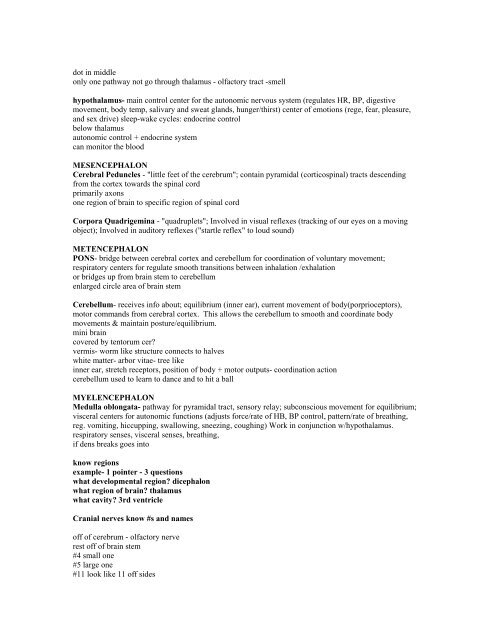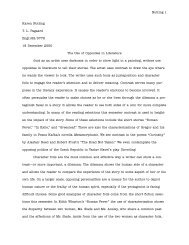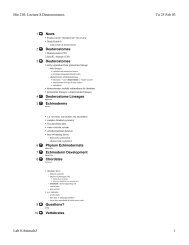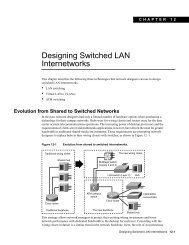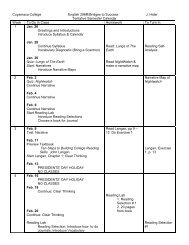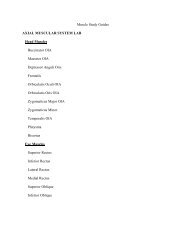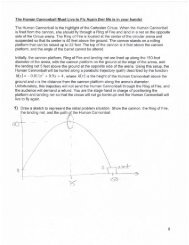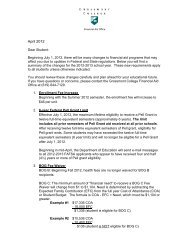You also want an ePaper? Increase the reach of your titles
YUMPU automatically turns print PDFs into web optimized ePapers that Google loves.
dot in middleonly one pathway not go through thalamus - olfactory tract -smellhypothalamus- main control center for the autonomic nervous <strong>system</strong> (regulates HR, BP, digestivemovement, body temp, salivary and sweat glands, hunger/thirst) center of emotions (rege, fear, pleasure,and sex drive) sleep-wake cycles: endocrine controlbelow thalamusautonomic control + endocrine <strong>system</strong>can monitor the bloodMESENCEPHALONCerebral Peduncles - "little feet of the cerebrum"; contain pyramidal (corticospinal) tracts descendingfrom the cortex towards the spinal cordprimarily axonsone region of brain to specific region of spinal cordCorpora Quadrigemina - "quadruplets"; Involved in visual reflexes (tracking of our eyes on a movingobject); Involved in auditory reflexes ("startle reflex" to loud sound)METENCEPHALONPONS- bridge between cerebral cortex and cerebellum for coordination of voluntary movement;respiratory centers for regulate smooth transitions between inhalation /exhalationor bridges up from brain stem to cerebellumenlarged circle area of brain stemCerebellum- receives info about; equilibrium (inner ear), current movement of body(porprioceptors),motor commands from cerebral cortex. This allows the cerebellum to smooth and coordinate bodymovements & maintain posture/equilibrium.mini braincovered by tentorum cer?vermis- worm like structure connects to halveswhite matter- arbor vitae- tree likeinner ear, stretch receptors, position of body + motor outputs- coordination actioncerebellum used to learn to dance and to hit a ballMYELENCEPHALONMedulla oblongata- pathway for pyramidal tract, sensory relay; subconscious movement for equilibrium;visceral centers for autonomic functions (adjusts force/rate of HB, BP control, pattern/rate of breathing,reg. vomiting, hiccupping, swallowing, sneezing, coughing) Work in conjunction w/hypothalamus.respiratory senses, visceral senses, breathing,if dens breaks goes intoknow regionsexample- 1 pointer - 3 questionswhat developmental region? dicephalonwhat region of brain? thalamuswhat cavity? 3rd ventricleCranial nerves know #s and namesoff of cerebrum - olfactory nerverest off of brain stem#4 small one#5 large one#11 look like 11 off sides


